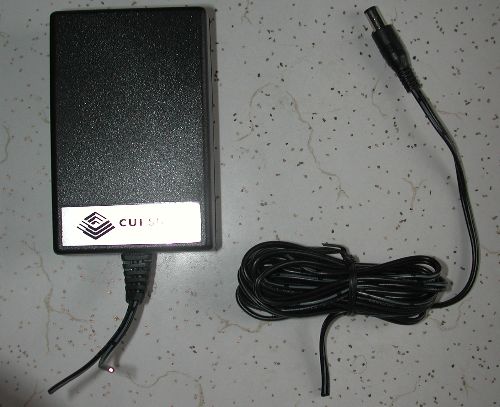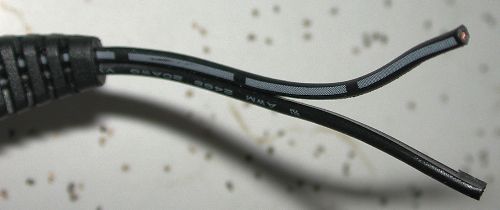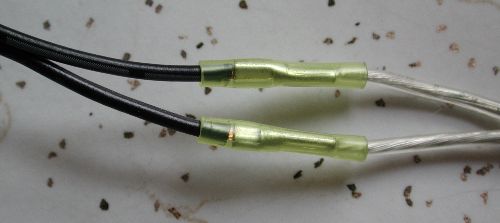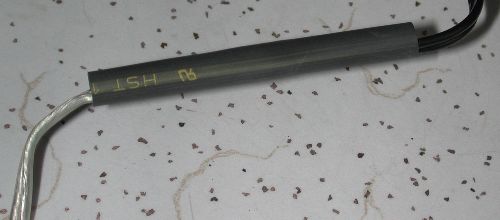How to create a Universal Power Supply for your Base Station
Maybe I am the only person to travel, but I am always dismayed when my electronic equipment is only meant to be used in a limited number of locations. Early Macintoshes had a Universal Power Supply and standard DIN plugs... plug them in, and they just work. Ostensibly as a cost-saving measure, Apple began manufacturing computers with power supplies that did not function from 93-250VAC and 50-60Hz anymore.
At least the Powerbooks kept their universal power supplies and the Airport Extreme base station now have them also. However, "Graphite" and the later "Snow" base stations have localized power adapters that can be hard to find or expensive. When I moved to France for a year, I had a choice between buying a local power supply from Apple or to get a universal one.
So, I set out to find myself a universal power supply that would fit my "Graphite" base station. What I discovered was that finding a power supply for the "Graphite" is not easy. For one, it employs a P6 power plug that is relatively uncommon. Secondly, universal power supplies with the right amperage capacity are either expensive or hard to find.
The Graphite base station calls for a power supply that supplies 12VDC at up to 1.25 Amperes, i.e. 15W (multiply the volts x amps to get the power rating in watts). I am unsure what kind of power the Snow base station draws, so look at the underside to see how many amperes it calls for. Then buy a power supply with at least that power rating or more.
The easy way:
Winston Weinmann found a universal power supply in France (Part number 9935) by a Hong Kong company called Amplus that could create voltages from 5-24VDC and that included the right power supply tip to fit his ABS. Similar power supplies can be purchased in the USA from their US distributor Velleman USA. I only reviewed their web-site for a short while but either the PSSMV3,PSSMV4U or the PSSMV5U power supply should do the trick. All have the right wattage rating (i.e. above 15W) and voltage settings to satisfy an ABS.
For other areas in the globe, go to the parent company website in Hong Kong and then request some info on distributors in your area. The only thing to be careful about is polarity (positive in the center) and voltage (12VDC) for the Graphite or Silver ABS. Furthermore, if you know of any additional universal power supplies that fit without modifications, please send me an e-mail so I can also highlight them here.
The harder way:
I finally secured a 12VDC, 15W power supply for about $21 at Allied Electronics for the "Graphite" base station (see the catalog page). The Allied SKU is 653-0310.
Unfortunately, the included plug did not fit so I had to make some permanent modifications. Please remember: Such modifications void any warranty you may have had. Unless you're diligent about checking polarities, wiring, etc. you may fry your ABS. Furthermore, if all you're after is replacing your ABS power supply (because you lost the old one, for example) you may be better off simply buying a used one from Base Station Rescue for $15 (US Only - Thank you, Tom Maggio!).
Please proceed with caution and with the full knowledge that you may harm yourself and/or the ABS. This information is presented at your risk to follow.
Since the plug on the Power Supply did not fit the "Graphite" base station, I resorted to cutting off the plugs and splicing the "Graphite" power plug onto the universal power supply.
To follow along, you'll have to scrounge some ingredients: Two 22AWG butt connectors, a proper crimper, a multimeter, some heat shrink tubing and a means to heat it evenly. Most of the stuff can be found at Radio Shack. Below is a picture of the 12VDC CUI power supply I purchased after I cut its tail off.

Now you'll have to pull out your trusty multimeter to determine the polarity of the wiring. By default, the positive conductor has either a stripe or plain writing on it while the ground remains bare. By selecting the DC voltage setting you should be able to determine polarity pretty quickly.

In the picture above, the conductor with the long stripes on it is positive. The following picture shows the Apple power supply cord. Here, the positive conductor was the one with the writing on it. Note how faint it is!

Using the multimeter, ensure polarity as per the diagram on the bottom of your base station. Next, slip the heat shrink tubing over the wiring. Try to chose a size that can barely accomodate the heat butt connectors. Then crimp the butt connectors in place.
Before you apply the heat shrink tubing, re-test the plug with the multimeter to ensure proper polarity. The center pin of the plug should be positive with the exterior acting as ground, as per the diagram on the underside of your ABS.

Now slip the heat shrink insulation over the two butt connectors.

Last but not least, shrink the insulation in place. This insulation will keep out moisture and act as a strain relief as well. Once it has been shrunk down, it'll surround the wiring and the connectors.

